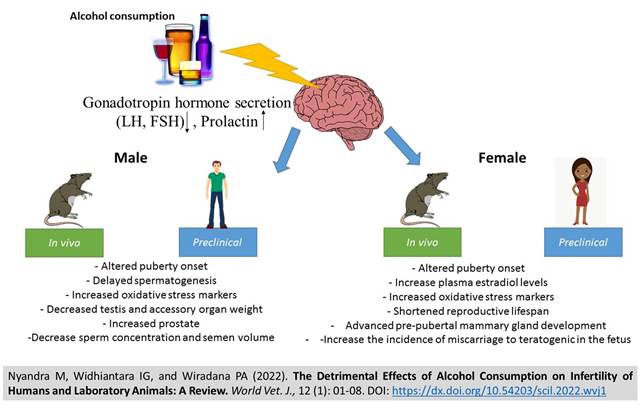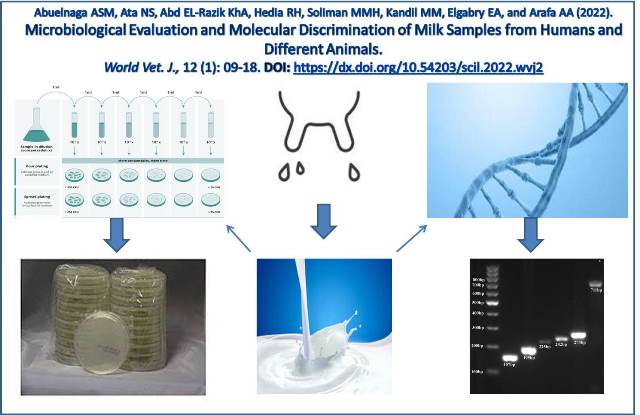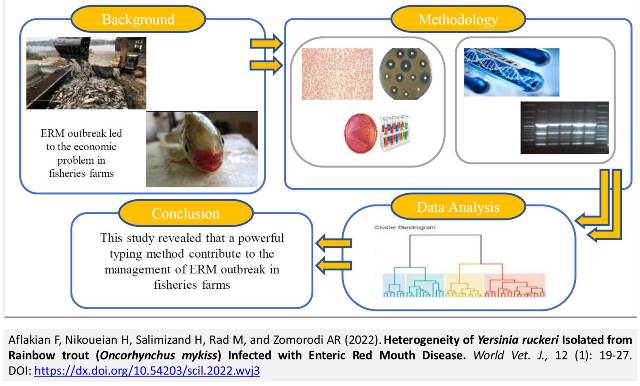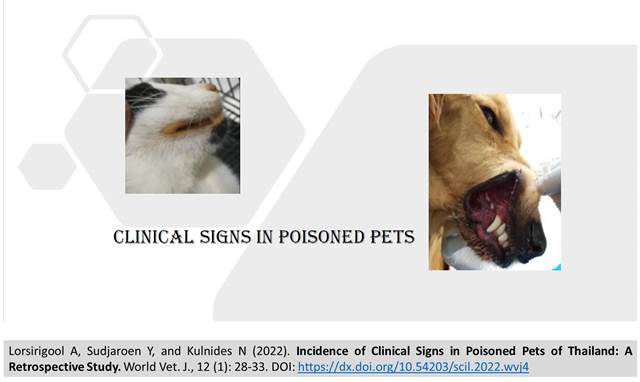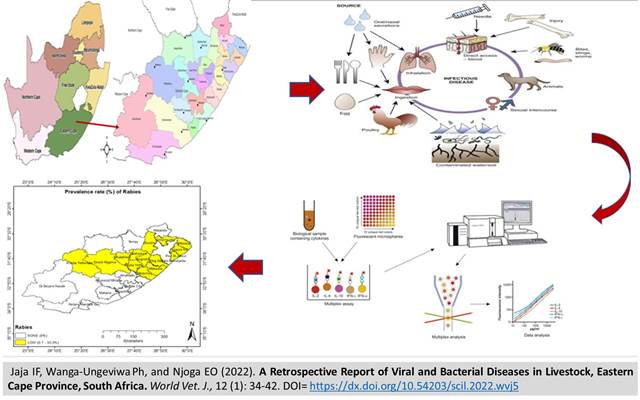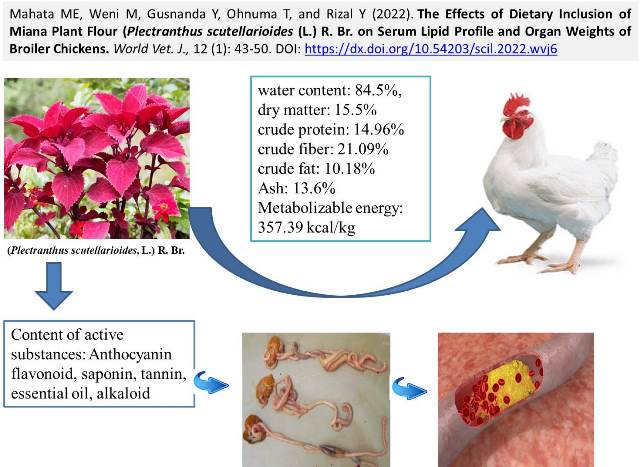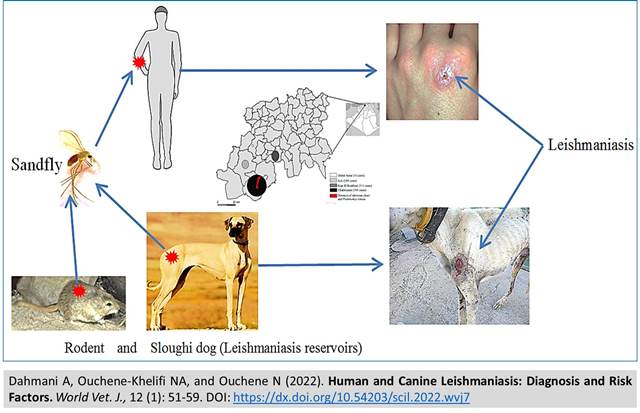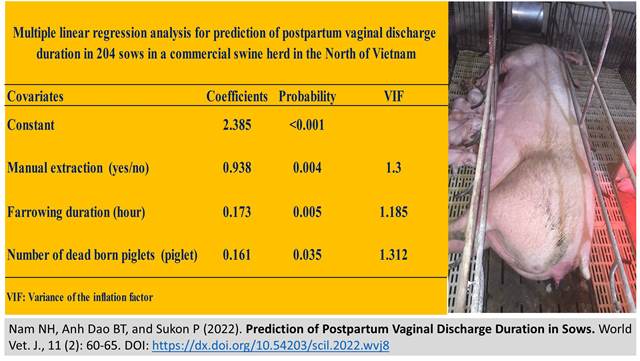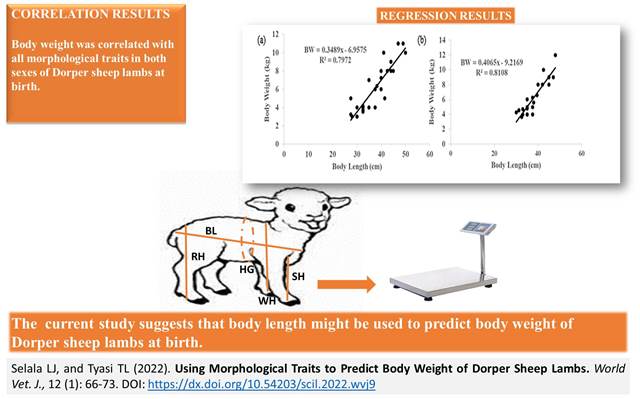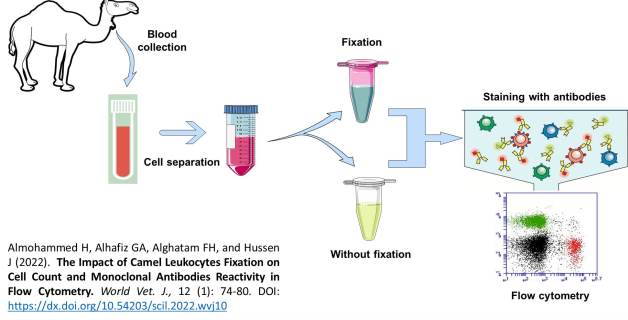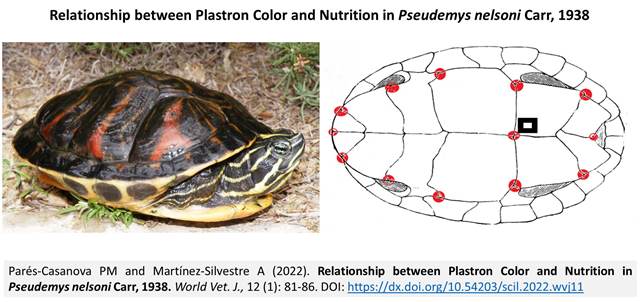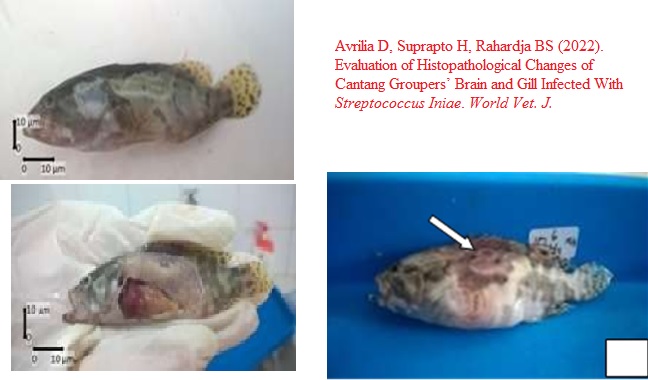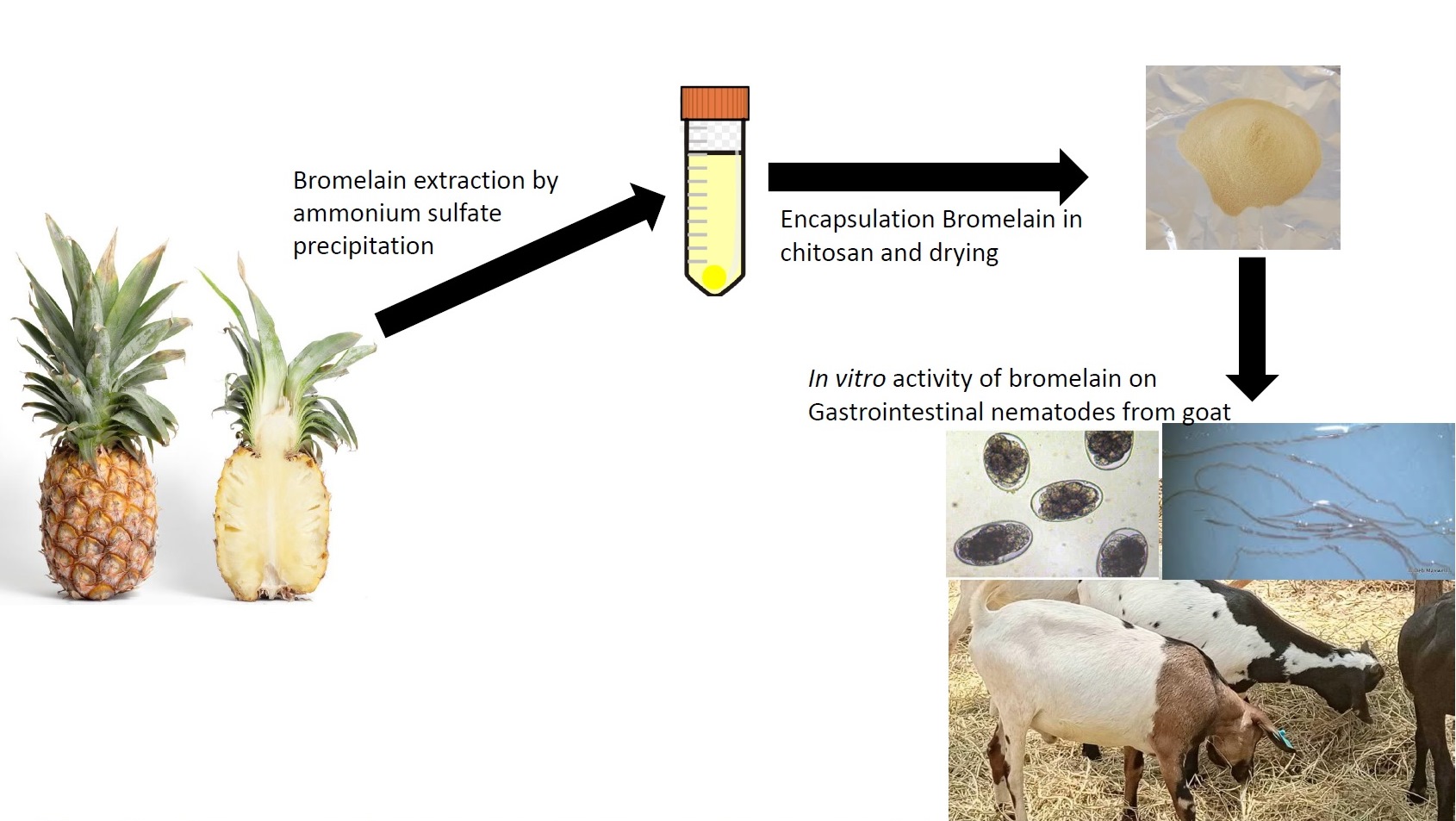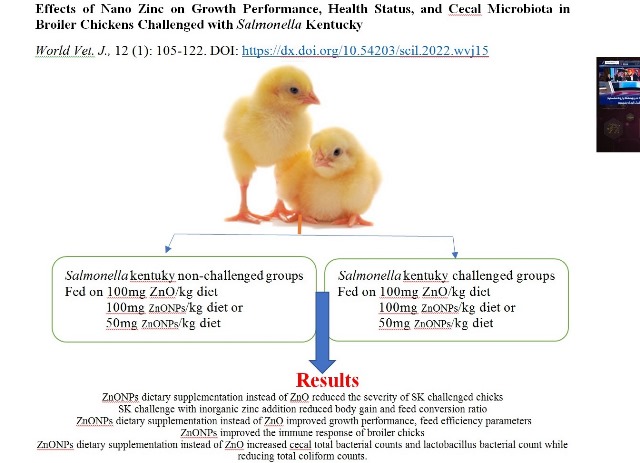Previous issue | Next issue | Archive
![]() Volume 12 (1); March 25, 2022 [Booklet] [EndNote XML for Agris]
Volume 12 (1); March 25, 2022 [Booklet] [EndNote XML for Agris]
The Detrimental Effects of Alcohol Consumption on Infertility of Humans and Laboratory Animals: A Review
|
|
Nyandra M, Widhiantara IG, and Wiradana PA.
World Vet. J. 12(1): 01-08, 2022; pii:S232245682200001-12
DOI: https://dx.doi.org/10.54203/scil.2022.wvj1
ABSTRACT: In recent decades, the decline in human fertility has become a major concern. However, unhealthy lifestyle practices, such as the use of addictive substances that contribute to infertility persist in society. Therefore, the current study reviewed the literature addressing the effects of alcohol consumption patterns on male and female fertility. Although alcohol intake is socially accepted, its detrimental influence on male and female fertility rates has been regularly observed in recent years. The findings have revealed that abstinence from chronic alcohol intake did not recover the testes from the negative effects of alcohol. Heavy drinking, defined as 8 or more glasses per week for a woman or 15 or more drinks per week for a man might impair female reproductive function. In conclusion, the implementation of an in vivo evidence strategy ranging from animal studies to preclinical ones has indicated that alcohol intake may be related to negative effects on reproductive parameters in both males and females. The present review deserves to be highlighted since it is significant for those who lead an unhealthy lifestyle, such as those who use alcohol.
Keywords: Addictive substances, Alcohol consumption, Reproductive function, Unhealthy lifestyles
[Full text-PDF] [Crossref Metadata] [Scopus] [Export from ePrint] [How to Cite]
Microbiological Evaluation and Molecular Discrimination of Milk Samples from Humans and Different Animals
|
|
Abuelnaga ASM, Ata NS, Abd EL-Razik KhA, Hedia RH, Soliman MMH, Kandil MM, Elgabry EA, and Arafa AA.
World Vet. J. 12(1): 09-18, 2022; pii:S232245682200002-12
DOI: https://dx.doi.org/10.54203/scil.2022.wvj2
ABSTRACT: Milk is a highly nutritious food and it is important to be free of any pathogenic microbes that could be transmitted to humans and affect public health. A total of 145 milk samples were collected from humans and different animal species (cow, buffalo, ewe, goat, camel, mare, and donkey) and underwent physical examination (color, odor, and taste), chemical analysis for its components (water, total salt, fat, protein, lactose, and ash), and finally microbiological (bacteriological and mycological) examinations. Standard plate count, preliminary incubation count, lab pasteurized count, coliform, Escherichia coli, Staphylococcus species, Salmonella species, yeast, and mold counts were measured. PCR test was performed to differentiate milk from different sources (animals and humans) by producing a specific band for each milk type. The results of the physical examination of different kinds of milk showed different grades of white color with the characteristic odor and taste of each milk type. Chemical examination revealed that the highest water content was in donkey milk and the lowest was in buffalo milk while total solids indicated the highest content in sheep milk and the lowest in donkey milk. The microbiological analysis presented that the standard plate count results were the highest in the milk obtained from sheep and camel, while donkey milk was the least in this regard. Yeast counts were the highest in buffalo milk but cow milk was the highest in mold counts. PCR results of milk types using species-specific primers and DNA template extracted from milk somatic cells revealed a specific band for each milk type as 157, 195, 225, 242, 274, and 711 base pair (bp) for goat, human, sheep, buffalo, cattle milk, and camel milk, respectively. It was concluded that more restrictions must be applied to decrease milk contamination as high microbial counts detected in the present study can affect milk quality, public health, and the dairy industry. PCR used in the current work for milk discrimination used milk somatic cells specifically mitochondrial cytochrome b gene which exhibited high specificity in the PCR reactions and this could be served as a cheap and simple method, compared to other types of PCR.
Keywords: Bacterial count, Fungal count, Milk, PCR
[Full text-PDF] [Crossref Metadata] [Scopus] [Export from ePrint] [How to Cite]
Heterogeneity of Yersinia ruckeri Isolated from Rainbow trout (Oncorhynchus mykiss) Infected with Enteric Red Mouth Disease
|
|
Aflakian F, Nikoueian H, Salimizand H, Rad M, and Zomorodi AR.
World Vet. J. 12(1): 19-27, 2022; pii:S232245682200003-12
DOI: https://dx.doi.org/10.54203/scil.2022.wvj3
ABSTRACT: Regarding the increasing prevalence of antimicrobial resistance as a global menace, typing procedures are of great importance in epidemiological surveys. In the current study, interspecies differences of Yersinia ruckeri (Y. ruckeri) isolates were detected by antimicrobial susceptibility profiling and molecular traits to determine the relationship between isolates. The current study was conducted on 27 Y. ruckeri isolates collected from 40 infected rainbow trout (Oncorhynchus mykiss) with clinical enteric red mouth disease in Mashhad, Iran. Interspecies differences of all isolates were detected by antimicrobial susceptibility profiling using disk diffusion method, Repetitive Extragenic Palindromic PCR (REP-PCR), Enterobacterial Repetitive Intergenic Consensus PCR (ERIC-PCR), and Random Amplification of Polymorphic DNA PCR (RAPD-PCR) to determine the relationship between isolates. Simpson’s diversity index was calculated for each typing technique. The most phenotype resistant was against ampicillin, chloramphenicol, and lincomycin. Furthermore, enrofloxacin and ciprofloxacin showed the highest activity (100%) against isolates. According to the results, the highest diversity index was observed in the REP-PCR method (D = 0.91). In conclusion, REP-PCR can be a powerful technique for epidemiological studies.
Keywords: Antimicrobial susceptibility, Enteric red mouth disease, Epidemiological study, Molecular typing, Yersinia ruckeri
[Full text-PDF] [Crossref Metadata] [Scopus] [Export from ePrint] [How to Cite]
Incidence of Clinical Signs in Poisoned Pets of Thailand: A Retrospective Study
|
|
Lorsirigool A, Sudjaroen Y, and Kulnides N.
World Vet. J. 12(1): 28-33, 2022; pii:S232245682200004-12
DOI: https://dx.doi.org/10.54203/scil.2022.wvj4
ABSTRACT: Clinical signs appear immediately or gradually in poisoned pets. Poisonous agents in pets, especially dogs and cats, have been reported to include human medications (acetaminophen), pesticides (organophosphate and carbamate), insecticides for veterinary use (ivermectin), and food (methylxanthines). The current study investigated the incidence of poisoning in dogs and cats residing in Rayong and Nakhon Ratchasima provinces as well as Bangkok, Thailand, during 2016-2020. The study found a total of 102 poisoned cases of dog and cat, including 58 dogs (56.86%) and 44 cats (43.14%). The poisoned dogs included 39 males (67.24%) and 19 females (32.26%), while poisoned cats consisted of 29 males (65.91%) and 15 females (34.09%). Poisoning was highly diagnosed in mixed breed dogs and domestic short-haired cats. The average age of poisoned dogs and cats was reported as 3.67 ± 1.92 and 3.02 ± 1.72 years, respectively. The most common poisonous agents found in dogs and cats were organophosphate-carbamate groups and acetaminophen. Tachycardia, hypersalivation, dyspnea, and facial swelling were the most common clinical signs observed in poisoned dogs and cats.
Keywords: Cat, Clinical signs, Dog, Poisoning
[Full text-PDF] [Crossref Metadata] [Scopus] [Export from ePrint] [How to Cite]
A Retrospective Report of Viral and Bacterial Diseases in Livestock, Eastern Cape Province, South Africa
|
|
Jaja IF, Wanga-Ungeviwa Ph, and Njoga EO.
World Vet. J. 12(1): 34-42, 2022; pii:S232245682200005-12
DOI: https://dx.doi.org/10.54203/scil.2022.wvj5
ABSTRACT: Livestock disease, particularly viral and bacterial disease, impedes livestock farming productivity and reduces available food in the current system, leading to food insecurity and economic losses. The current study aimed to determine the prevalence of viral and bacterial disease in the Eastern Cape, South Africa. A retrospective data of livestock diseases in the Eastern Cape Province from 2013 to 2018 was obtained from veterinary records in the Department of Rural and Agrarian Reform (DrDAR), Bisho South Africa database, decoded, analyzed, and interpreted. The result revealed a significant association between local municipality, season, year, and livestock species. The highest prevalence of disease was found in the Lukhanji (29.4%) and Mbhashe (17.5%), while bacterial diseases were more prevalent in Nelson Mandela Bay (27.7%) and Raymond Mhlaba (34.9%) municipalities. More diseases were in autumn (53.8%) and spring (58.5%). The highest proportions of bacterial and viral diseases were in caprine (97.2%) and bovine (41.4%). Odds of disease occurrence were the highest in Intsika yethu local municipality (OR = 3.279, 95% CI = 0.043-263.6) in autumn (OR = 2.131, 95% CI = 0.815-5.569), and in bovine (OR = 58.825, 95% CI = 16.283-205.591). The results necessitate veterinary authorities to strengthen preventative program activities to mitigate livestock diseases in study area.
Keywords: Animal diseases, Bacterial diseases, Bovine malignant catarrhal fever, Livestock disease, Rabies, Viral diseases
[Full text-PDF] [Crossref Metadata] [Scopus] [Export from ePrint] [How to Cite]
The Effects of Dietary Inclusion of Miana Plant Flour (Plectranthus scutellarioides (L.) R. Br. on Serum Lipid Profile and Organ Weights of Broiler Chickens
|
|
Mahata ME, Weni M, Gusnanda Y, Ohnuma T, and Rizal Y.
World Vet. J. 12(1): 43-50, 2022; pii:S232245682200006-12
DOI: https://dx.doi.org/10.54203/scil.2022.wvj6
ABSTRACT: Miana plant (Plectranthus scutellarioides (L.) R. Br. contains active compounds (such as steroids, flavonoids, saponins, and tannins) which can have several health benefits, including lowering cholesterol LDL and triglyceride as well as increasing feed consumption, body weight, and carcass weight of broilers. Therefore, the current experiment was conducted to evaluate the effect of Miana plant flour (Plectranthus scutellarioides (L.) R. Br. in the diet on blood serum lipid profiles and physiological organs of broilers. The experiment was performed on 100 day-old broiler chickens from strain Arbor Acres CP-707. The experiment was designed in a completely randomized design with five different levels of Miana plant flour (0%, 5%, 7.5%, 10%, and 12.5%) in broiler's diets as treatment, and each treatment was repeated four times. The diet was arranged iso-protein (21%) and iso-energy (2900 kcal/kg). The serum lipid profile measurement included the analysis of total cholesterol, triglycerides, high-density lipoprotein (HDL), and low-density lipoprotein (LDL). Physiological organ analysis entailed the percentage of liver weight, pancreas weight, gizzard weight, small intestine weight, and length of parts of the small intestine (duodenum, jejunum, and ileum) of broilers. The results showed that the inclusion of Miana plant flour in the broiler's diet could significantly affect total cholesterol, triglycerides, HDL, and LDL in the serum of broiler chickens, and it affected duodenum length significantly. Furthermore, the inclusion of Miana plant flour in the broiler's diet had an insignificant effect on the percentage of liver weight, pancreas weight, gizzard weight, small intestine weight, and length of each part of the small intestine (jejunum and ileum) on broilers. In conclusion, the inclusion of Miana plant flour as much as 12.5% in broiler's diets reduced total cholesterol, triglycerides, and LDL, and increased the HDL and duodenum length without adverse effects on the other physiological organs of broiler chickens.
Keywords: Broiler, Lipid profile, Lipoproteins, Miana plant, Physiological organs
[Full text-PDF] [Crossref Metadata] [Scopus] [Export from ePrint] [How to Cite]
Human and Canine Leishmaniasis: Diagnosis and Risk Factors
|
|
Dahmani A, Ouchene-Khelifi NA, and Ouchene N.
World Vet. J. 12(1): 51-59, 2022; pii:S232245682200007-12
DOI: https://dx.doi.org/10.54203/scil.2022.wvj7
ABSTRACT: An Leishmaniasis is a zoonosis disease caused by a parasite of the genus Leishmania transmitted by the sandflies. It is ranked among the 20 major neglected tropical diseases. Algeria is classified as one of the most affected countries by cutaneous leishmaniasis worldwide. This study was conducted in the Medea region, north-central Algeria, to investigate human and canine leishmaniasis. Diagnosis of human leishmaniasis was conducted on patients with symptoms suggestive of leishmaniasis. The presence of wet or dry lesions, number, location, duration, and travel history were recorded for each patient. Confirmation of the disease was performed by histopathological test. Canine leishmaniasis was diagnosed on the basis of clinical examination in 175 male Sloughi dogs. Symptoms included skin ulcerations, lymphadenopathy, dermatitis with alopecia, weight loss, and ocular or nasal lesions. A total of 1070 cases of human leishmaniasis were investigated, including 1067 (99.72%) cases of cutaneous leishmaniasis and 3 (0.28%) cases of visceral leishmaniasis. Of the 1067 human cutaneous leishmaniasis cases, 59.51% and 40.49% were male and female, respectively. For visceral leishmaniasis, all cases were male. Persons aged less than 10 years were more infected than those over 10 years of age. Chahbounia region was found to be the most infected area, compared to other regions. The highest number of human leishmaniasis cases was recorded during November (462 cases). Human cutaneous leishmaniasis was the most frequent (81.38%) among the other human pathologies in the study area; followed by pulmonary tuberculosis (14.8%). All Sloughi dogs were diagnosed with leishmaniasis of which the most common symptoms included lymph node hypertrophy, emaciation, skin lesions, fever, epistaxis, alopecia, ocular lesions, anemia, onychogryphosis, chemosis, and the less common symptoms are: fever, diarrhea, and splenomegaly. The Psammomys obesus and Meriones shawi were present especially in the periphery of the lands next to the valley of Chahbounia city. Leishmaniasis remains present in the region, constituting a public health menace. The union of veterinary and public services is necessary to eradicate the disease by controlling the vector and the reservoirs of the parasite.
Keywords: Diagnosis, Dogs, Human, Leishmaniasis, Merione shawi, Psammomys obesus
[Full text-PDF] [Crossref Metadata] [Scopus] [Export from ePrint] [How to Cite]
Prediction of Postpartum Vaginal Discharge Duration in Sows
|
|
Nam NH, Anh Dao BT, and Sukon P.
World Vet. J. 12(1): 60-65, 2022; pii:S232245682200008-12
DOI: https://dx.doi.org/10.54203/scil.2022.wvj8
ABSTRACT: Prolonged farrowing duration increases stillbirth in piglets and affects maternal health leading to a decrease in the reproductive performance of the sow. The present study aimed to predict the duration of postpartum vaginal discharge (PVD, day) in sows. Data were collected from 204 mixed parity Landrace X Yorkshire sows in a swine farm in Bacninh province, Vietnam. Parity, gestation length, litter size, number of dead-born piglets (NDB), farrowing duration (FD, h), and manual extraction (ME) were recorded. Postpartum vaginal discharge was monitored twice a day until no discharge was detected in two successive observations. Linear regression analysis was used to build the model that best predicted the duration of postpartum vaginal discharge. Results showed that the average duration of postpartum vaginal discharge was 3.3 ± 1.6 days. The final multiple linear regression selected manual extraction, farrowing duration, and the number of dead-born piglets as the most significant factors for the prediction of postpartum vaginal discharge duration. All of these three factors were positively associated with PVD. This study indicated that the duration of postpartum vaginal discharge can be predicted. Shortening the farrowing duration, which may reduce the NBD, lowering the rate of manual extraction can be some of the approaches to decrease the duration of postpartum vaginal discharge. Moreover, the results of this study suggested that suitable postpartum treatments such as antibiotics and anti-inflammatory drugs, and care should be provided to the sows with a high risk of prolonged postpartum vaginal discharge to shorten this period.
Keywords: Farrowing duration, Manual extraction, Sow, Vaginal discharge
[Full text-PDF] [Crossref Metadata] [Scopus] [Export from ePrint] [How to Cite]
Using Morphological Traits to Predict Body Weight of Dorper Sheep Lambs
|
|
Selala LJ, and Tyasi TL.
World Vet. J. 12(1): 66-73, 2022; pii:S232245682200009-12
DOI: https://dx.doi.org/10.54203/scil.2022.wvj9
ABSTRACT: The Dorper sheep are known to be a fast-growing breed with a very good body conformation that produces high-quality carcass. The recent study was conducted to determine the relationship between body weight (BW) and morphological traits, such as heart girth (HG), rump height (RH), body length (BL), withers height (WH), and sternum height (SH). A total of 51 Dorper sheep lambs (29 female and 22 male lambs) were used as experimental animals. The data was collected 24 hours after birth. Data were analyzed using Pearson’s correlation and simple regression to attain the objectives. The obtained results indicated that BW had a positively high statistically correlation with HG (r = 0.81), RH (r = 0.766), BL (r = 0.893), WH (r = 0.874), and SH (r = 0.618) in female Dorper sheep lambs. Furthermore, results showed that BW had a positively high statistically significant association with HG (r = 0.886), RH (r = 0.590), BL (r = 0.900), WH (r = 0.613), and SH (r = 0.707) in male Dorper sheep lambs. Simple regression models for morphological traits indicated that BL had the highest coefficient of determination (R2 = 0.80) and the lowest mean square error (MSE = 2.83) in female Dorper sheep lambs, and also the highest coefficient of determination (R2 = 0.81) and mean square error (MSE = 1.07) in male Dorper sheep lambs. In conclusion, the findings indicated that improving HG, RH, BL, WH, and SH might result in the enhancement of BW in Dorper sheep lambs. Simple regression results suggested that BL could be selected as a facilitating factor in the breeding programs to improve the BW of Dorper sheep lambs at birth.
Keywords: Body weight, Morphological traits, Pearson’s correlation, Simple regression
[Full text-PDF] [Crossref Metadata] [Scopus] [Export from ePrint] [How to Cite]
The Impact of Camel Leukocytes Fixation on Cell Count and Monoclonal Antibodies Reactivity in Flow Cytometry
|
|
Almohammed H, Alhafiz GA, Alghatam FH, and Hussen J.
World Vet. J. 12(1): 74-80, 2022; pii:S232245682200010-12
DOI: https://dx.doi.org/10.54203/scil.2022.wvj10
ABSTRACT: Immunophenotyping of separated leukocytes is a common technique used to evaluate the changes in cellular immunity during clinical studies. For fixed cells or blood specimens infected with hazardous pathogens, cell fixation is performed before immunofluorescence. The impact of camel leukocytes fixation before staining on the reactivity of cell surface markers with monoclonal antibodies has not been investigated so far. The aim of the present study was, therefore, to compare cell staining of fixed and unfixed camel leukocytes with monoclonal antibodies to several cell surface antigens. Leukocytes were separated from camel blood and were fixed with paraformaldehyde (PFA) or left without fixation. Cells were labeled with monoclonal antibodies to several leukocyte antigens and the expression pattern of the antigens was compared between fixed and non-fixed cells using flow cytometry. The mean fluorescence intensity of each cell marker was calculated and compared between fixed and unfixed cells. Leukocyte fixation with PFA changed the binding activity of the monoclonal antibodies to CD163 and WC1 markedly, making it unable to stain any cell population. Although the cell staining efficacy of other molecules (such as CD14, CD172a, MHCII, CD11a, CD18, CD44, and CD45) was reduced, they were still able to define the target cells. The fixation-induced changes in the expression density of the analyzed monocytic markers may, however, lead to the misinterpretation of immunophenotyping studies of fixed monocytes or macrophages. Collectively, the obtained results indicated significant changes in the staining efficacy of monoclonal antibodies against several cell surface antigens of camel leukocytes, which should be considered when PFA-fixed cellular targets on camel leukocytes are to be analyzed.
Keywords: Antibodies, Cell fixation, Dromedary camel, Flow cytometry, Leukocytes
[Full text-PDF] [Crossref Metadata] [Scopus] [Export from ePrint] [How to Cite]
Relationship between Plastron Color and Nutrition in Pseudemys nelsoni Carr, 1938
|
|
Parés-Casanova PM and Martínez-Silvestre A.
World Vet. J. 12(1): 81-86, 2022; pii:S232245682200011-12
DOI: https://dx.doi.org/10.54203/scil.2022.wvj11
ABSTRACT: Body coloration of emydids can be triggered by different types of factors. Therefore, the current study aimed to investigate the changes in plastron color of Florida Red-bellied Turtle Pseudemys nelsoni (P. nelsoni Carr, 1938), an emydid of North America. In the current study, 15 (3 males and 12 females) fresh corpses of captive-reared adult specimens of P. nelsoni were analyzed using digital images as well as applying geometric morphometrics and color photo processing techniques. Plastron color had no relationship with size nor fluctuating asymmetry, which could be considered as a negative proxy for stress. Moreover, there were no significant differences between males and females in this regard. It can be suggested that reddish on plastron for P. nelsoni was highly related to feeding, compared to other external factors, such as age, size, or stress. In wild P. nelsoni populations, reddish plastral coloration was related to body size probably due to ontogenetic differences in the diet, as juveniles are omnivorous. Since adults are herbivores, reddish fading observed in the samples of the current study would be a mere expression of unnatural colors, which can probably be linked to unbalanced feeding. The results of the current research could contribute to the understanding of the ways color changes appear in captive turtles in response to differences in dietary access to carotenoids.
Keywords: Chromatism, Coloration, Diet, Emydidae, Fresh-water turtles, Red-bellied turtle, Shell, Terrapins
[Full text-PDF] [Crossref Metadata] [Scopus] [Export from ePrint] [How to Cite]
Evaluation of Histopathological Changes in Cantang Groupers’ Brain and Gill Infected with Streptococcus Iniae
|
|
Avrilia D, Suprapto H, Rahardja BS.
World Vet. J. 12(1): 87-94, 2022; pii:S232245682200012-12
DOI: https://dx.doi.org/10.54203/scil.2022.wvj12
ABSTRACT: Cantang hybrid grouper is the result of hybridization between female Macan grouper (Epinephelus fuscoguttatus) and male Kertang grouper (Epinephelus lanceolatus). Hybrid fish have better performance in terms of growth, resistance to diseases, and tolerance to environmental factors, compared to the parents. One of the diseases that can attack fish is an infection induced by Streptococcus iniae (S. iniae), which is quite a dangerous bacterium since it can cause mass death of fish. The present study aimed to investigate the pathological changes of the brain and gill of Cantang hybrid grouper (Epinephelus fuscoguttatus and Epinephelus lanceolatus) infected with S. iniae. A total of 180 groupers from the Management Unit of Brackish Water Aquaculture, Situbondo, Indonesia, were included in the current study with a length of 7 cm. The experimental study was conducted using a complete randomized design, including three treatments and three repetitions for each one (n = 20). The main parameters to observe the histopathological changes in the fish internal organs, namely the gill and the brain at the beginning and the end of the study. Moreover, the supporting parameter was the water quality which included the temperature, oxygen content, pH, and salinity. Several observations including the pathogenicity test, Lethal Dosage 50 test, observation of clinical symptoms, and observation of histopathology were done during the treatment. The obtained results were indicative of the histopathology damages in the brain and gill tissues of the Cantag hybrid groupers infected with S. iniae. Different scores of lesions, infiltration, congestion, and degeneration were indicated in the brain tissue. Furthermore, the gill damages consisted of hyperemia, congestion, and infiltration. In conclusion, Cantang hybrid groupers (Epinephelus fuscoguttatus and Epinephelus lanceolatus) infected with S. iniae indicated the clinical symptoms, anatomical pathology, and histopathological changes.
Keywords: Bacteria, Epinephelus fuscoguttatus, Epinephelus lanceolatus, Histopatology, Streptococcus Iniae
[Full text-PDF] [Crossref Metadata] [Scopus] [Export from ePrint] [How to Cite]
In vitro Anthelmintic Efficacy of Nano-encapsulated Bromelain against Gastrointestinal Nematodes of Goats in Kenya
|
|
Daiba AR, Kagira JM, Ngotho M, Kimotho J, and Maina N.
World Vet. J. 12(1): 95-104, 2022; pii:S232245682200013-12
DOI: https://dx.doi.org/10.54203/scil.2022.wvj13
ABSTRACT: Gastrointestinal nematodes (GIN) significantly affect goats’ productivity, and thus farmers carry out regular deworming to manage the infections. The emergence of anthelmintic resistance and the high cost of current drugs call for the development of alternatives, including medicinal plant extracts. The current study aimed to assess the anthelmintic efficacy of chitosan encapsulated bromelain (EB) against a selected range of GIN affecting goats in Kenya. Bromelain was extracted using standard laboratory methods from peels of ripe pineapples and thereafter encapsulated with chitosan. The GIN eggs were isolated from goat feces using the flotation method and were then subjected to PCR to identify the species. Adult worms were collected from the gastrointestinal tract of goats slaughtered at the nearby Ruiru abattoir. The PCR showed the extracted strongyle eggs consisted of 7 species of nematodes, including Haemonchus contortus, Oesophagostomum spp., Nematodirus filicollis, Ostertagia ostertagi, Trichostrongylus vitrinus, Trichostrongylus colubriformis, and Trichostrongylus axei. The in vitro assays showed that chitosan EB had an IC50 of 0.184 mg/mL, 0.116 mg/mL, and 0.141 mg/mL for the egg hatch inhibition, larval, and adult mortality assays, respectively. In all the assays, EB indicated better activity than non-encapsulated bromelain. The EB affected the eggs and worms through softening and embrittling the cuticle and shell as well as damaging the blastomeres and causing the death of the growing embryo. According to the results of the current study, EB has high anthelmintic activity on a large range of GIN and has the potential to contribute to the management of these parasites of small ruminants.
Keywords: Anthelmintic activity, Bromelain, Chitosan, Goats, Nano-encapsulation, Nematodes
[Full text-PDF] [Crossref Metadata] [Scopus] [Export from ePrint] [How to Cite]
Effects of Nano Zinc on Growth Performance, Health Status, and Cecal Microbiota in Broiler Chickens Challenged with Salmonella Kentucky
|
|
El-Shenawy A, Salim AA, and Gouda MY.
World Vet. J. 12(1): 105-122, 2022; pii:S232245682200014-12
DOI: https://dx.doi.org/10.54203/scil.2022.wvj14
ABSTRACT: Public concern with the incidence of antibiotic-resistant bacteria, particularly among foodborne pathogens, such as Salmonella, has been challenging the poultry industry to find alternative means of control. The present study was conducted to investigate the effect of dietary replacement of inorganic zinc oxide (ZnO) by different levels of zinc nanoparticles on growth performance, blood serum biochemical changes, immune response, cecal microbiota, and some internal organs histopathology of Salmonella Kentucky (SK) challenged broiler chickens. A total of 180 one-day-old broiler chicks were used in the present experiment. The chicks were randomly allotted into six equal groups (30 chicks/group), with 3 subgroups containing 10 chicks as a replicate. The first group fed on the basal diet supplemented by 100 mg ZnO/kg diet, while the second and the third groups fed on the basal diet with replacement of ZnO by 100 and 50 mg of zinc oxide nanoparticles (ZnONPs)/kg diet, respectively. Moreover, the fourth, fifth, and sixth groups fed as the first three groups with SK challenge on the third day of age. Results showed that supplementation of 100 mg ZnONPs/kg diet instead of ZnO reduced the severity of the clinical signs, post-mortem lesions, mortality, and SK fecal shedding of SK challenged chicks. Replacement of ZnO by 100% or 50% of ZnONPs increased cecal total bacterial counts and lactobacillus bacterial count while reducing total coliform counts. On the other hand, the SK challenge increased cecal total bacterial counts and lactobacillus bacterial counts, compared to the broiler chicks group fed on the diet without SK challenge. The SK challenge with inorganic zinc addition reduced body gain and feed conversion ratio, while 100 or 50 mg ZnONPs/kg diet supplementation instead of ZnO improved growth performance, feed efficiency parameters. It was observed that the replacement of inorganic zinc (serum ZnO) by 100 mg /kg diet significantly increased lysosomal and phagocytic activity by about 261.5% and 17.9%, respectively. Moreover, 100% or 50% of ZnONPs instead of inorganic zinc significantly ZnONPs increased liver, spleen, and thymus gland relative weights of SK-challenged broiler chickens, compared to broiler chickens group fed on the same diet without challenge or compared to chicks group fed on ZnO supplemented diet with SK challenge, while replacement of inorganic zinc (ZnO) by 100 or 50mg ZnONPs/kg diet reduced the adverse effect.
Keywords: Broiler chicken, Growth performance, Nano zinc particles, Immune response, Salmonella challenge
[Full text-PDF] [Crossref Metadata] [Scopus] [Export from ePrint] [How to Cite]
Previous issue | Next issue | Archive
![]() This work is licensed under a Creative Commons Attribution 4.0 International License (CC BY 4.0).
This work is licensed under a Creative Commons Attribution 4.0 International License (CC BY 4.0).

